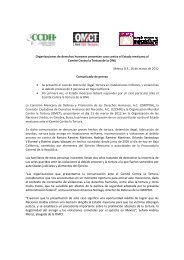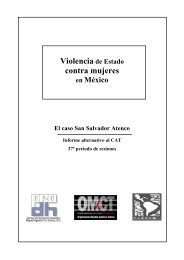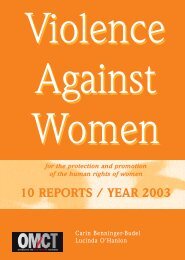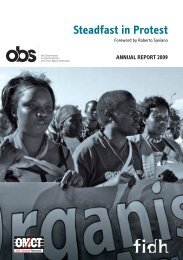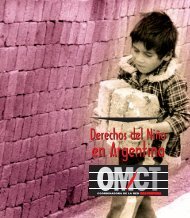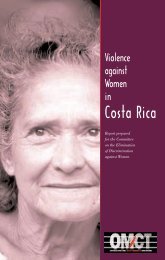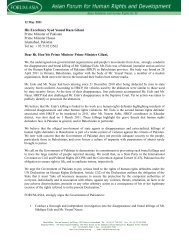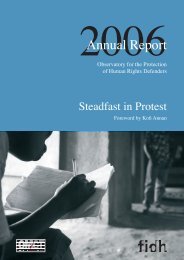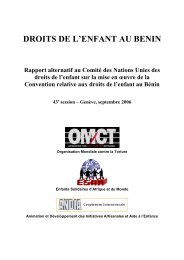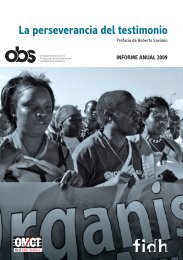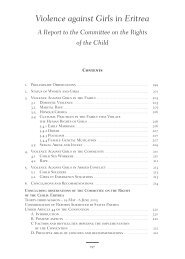eng - World Organisation Against Torture
eng - World Organisation Against Torture
eng - World Organisation Against Torture
You also want an ePaper? Increase the reach of your titles
YUMPU automatically turns print PDFs into web optimized ePapers that Google loves.
In 1998, the Philippines ratified the ILOConvention No. 138, which set the minimumage for basic work at 15 years of age an forhazardous work at 18 years of age. In 1994,the country signed the InternationalProgramme on the Elimination of ChildLabor (IPEC) of the ILO. The PhilippineLabour Code defines child labour as the“work of children below 15 years old or the<strong>eng</strong>agement of children aged between 15 to17 years old in hazardous work.” The lawprohibits child labour except, when underthe responsibility of their parents orguardians. It allows family labour, exceptwhen it prevents children from going toschool. The law however contradicts itself byallowing children of at least 14 years of ageto work as apprentices in industrial establishments.The Philippine Labour Code also mandatesthat the granting of opportunity to at least acquireelementary education to children under18 years of age who are employed indomestic house work. Violators of childlabour laws are penalized with fines amountingbetween PhP 1,000 to 10,000 or an imprisonmentbetween three months to threeyears or both. The law also prescribes the revokingof the operating license of repeat offenders.Hence, in accordance with its obligations underinternational law, the Republic of thePhilippines has enacted ample legislationensuring the protection of children against allforms of violence, such as commercial sexualexploitation, child abuse, and child trafficking.Article 15, Section 3(2) of the 1987Philippine Constitution ensures the right ofchildren to assistance and protection fromneglect, abuse, cruelty, exploitation and otherconditions prejudicial to their development.The Revised Penal Code (RPC) also laysdown the laws for the protection of children.For example, the exploitation of children isthe preserve of Article 278 of the RPC.Article 273, as amended by RA No. 7610,meanwhile defines rape as a heinous crimein cases when the victim is under 12 yearsof age and regardless whether it was consensualor not. Article 340 to 343, whichtackles the corruption of children, also relatesto the white slave trade and abductions.PD No. 603, or the Child and Youth WelfareCode of the Philippines defines the rights ofchildren, the responsibilities of parents andthe role of other institutions in promoting thewelfare of Filipino children. Prohibited actsinclude: inflicting cruel and inhuman punishmentto a child; leading the child to animmoral life; inducing a child to leave aninstitution where she is entrusted to care;16



